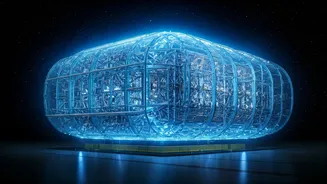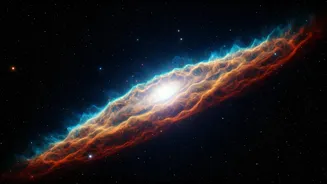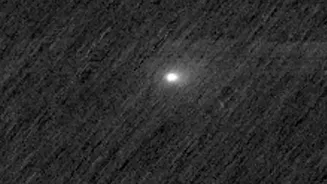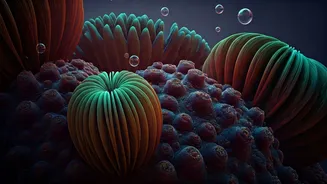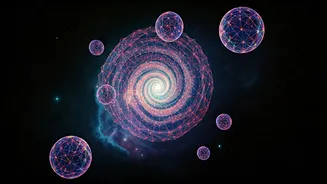Neutrinos: Elusive Particles
Neutrinos, often described as 'ghost particles', are fundamental in the universe. They rarely interact with matter, making them exceptionally difficult
to detect. Produced in nuclear reactions, the sun, and cosmic events, they come in three known flavors: electron neutrino, muon neutrino, and tau neutrino. Their incredibly small mass and ability to 'oscillate' (change flavors) add to their intrigue. The study of neutrinos provides crucial insights into the fundamental properties of the universe. Neutrino research, therefore, requires highly sensitive detectors and sophisticated techniques to unravel their secrets and their role in the cosmic web. The very nature of neutrino research allows scientists to test the Standard Model of particle physics, and explore the universe.
Multiplets and Dark Matter
The search for neutrino multiplets is closely tied to the hunt for dark matter and the exploration of new physics beyond the Standard Model. Certain theoretical models suggest that dark matter, which constitutes about 85% of the universe's mass, could interact with neutrinos. These interactions might manifest as 'neutrino multiplets', groups of neutrinos with slightly different properties. Detecting such multiplets could validate models of dark matter and reveal the existence of new particles. This would represent a major breakthrough in astrophysics. Finding these specific interactions presents a great challenge, and new experimental ideas are constantly being conceived. This kind of research allows us to understand what lies beyond the Standard Model.
Experimental Techniques: Key
Detecting neutrino multiplets requires extremely sensitive detectors and sophisticated analysis techniques. Experiments employ large volumes of specially designed materials, such as liquid argon or water, to capture the rare interactions of neutrinos. When a neutrino interacts, it can produce secondary particles that detectors can measure. Careful analysis of the resulting particle tracks and energies can reveal if there are any neutrino multiplets. These experiments employ several different kinds of detectors. These detectors can include the use of sophisticated analysis to find specific signals. These advanced technologies are essential to filter out background noise, which can often overwhelm the faint signals from neutrino interactions. Without these techniques, the research would be impossible.
Tightening the Limits
Recent searches for neutrino multiplets have begun to impose increasingly strict limits on the properties of these particles. The absence of observed multiplets already constrains the parameters of theoretical models that attempt to explain dark matter and other exotic physics. With each new experimental result and data analysis, the range of possible properties for these particles decreases. This helps scientists to either refine existing models or, in some cases, to discard them entirely. The process of tightening these limits is crucial for narrowing down the possible explanations for the universe's most mysterious components. The findings have profound implications for future particle physics research, and the ultimate comprehension of the cosmos.
Future Directions and Impact
The search for neutrino multiplets will continue to progress with more advanced detectors and refined analysis techniques. Future experiments aim to increase the sensitivity and search for specific interactions. Upcoming projects will employ even larger and more sensitive detectors. These experiments will enable scientists to probe even deeper into the properties of neutrinos and dark matter. The success of this research could not only confirm the existence of new particles but also reshape our understanding of the universe. It is hoped that the continued dedication of researchers can unlock more secrets of the cosmos, providing unprecedented insights.
